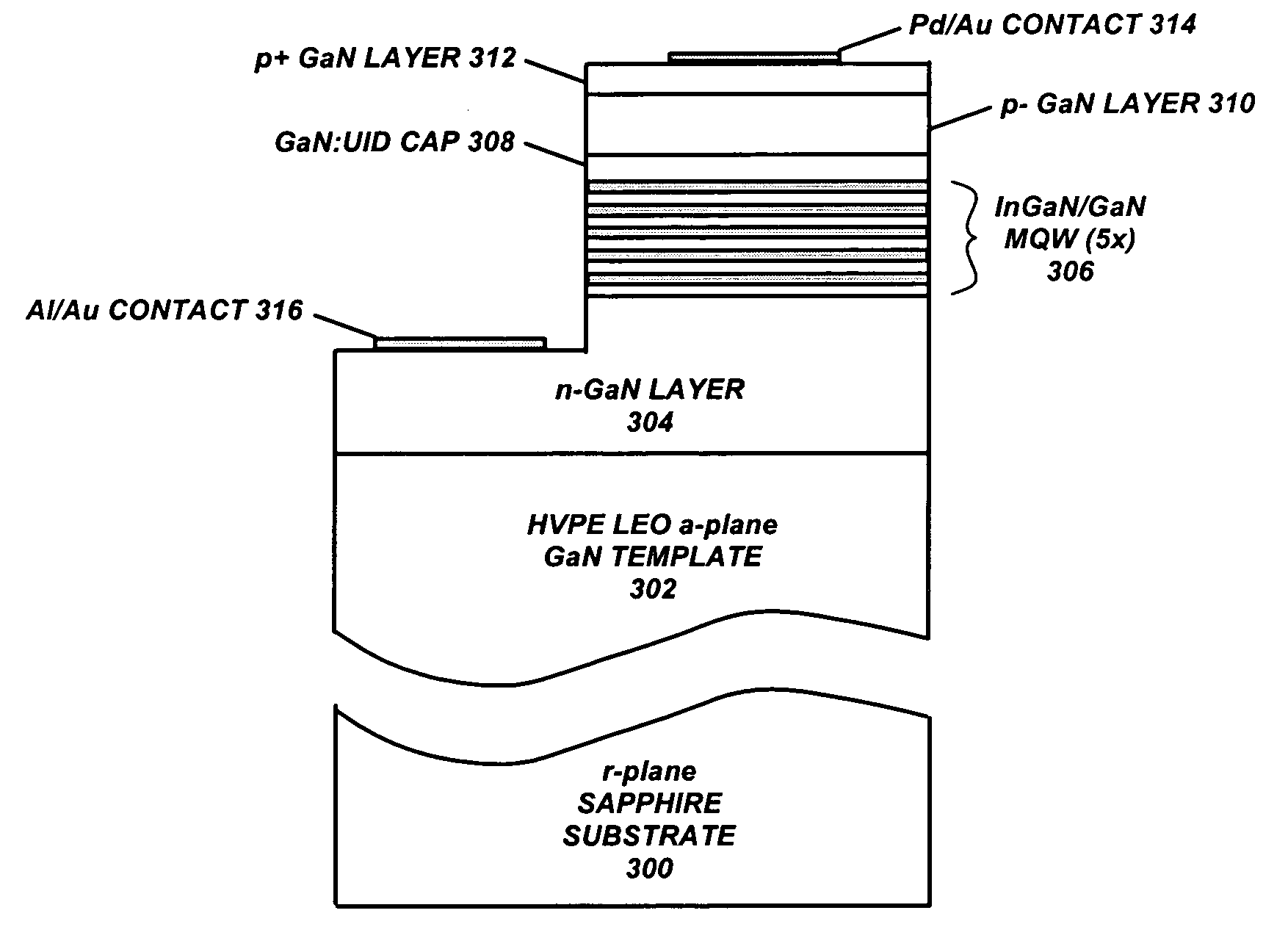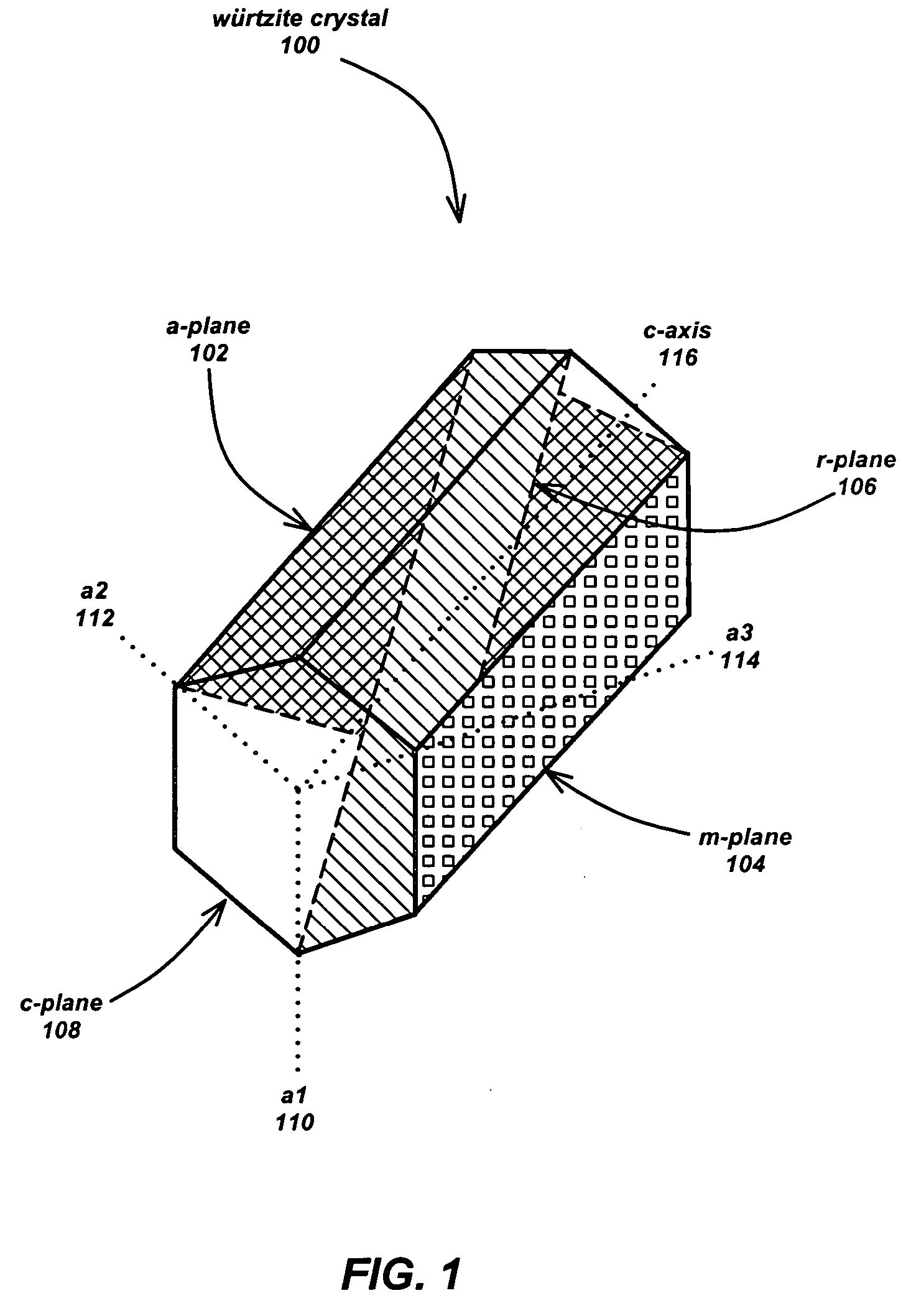Fabrication of nonpolar indium gallium nitride thin films, heterostructures and devices by metalorganic chemical vapor deposition
a technology of indium gallium nitride and thin film, which is applied in the direction of semiconductor devices, basic electric elements, electrical apparatus, etc., can solve the problems electronic devices, reducing the efficiency of carrier recombination, and qcse. undesirable, the effect of reducing the efficiency of iii-nitride based optoelectroni
- Summary
- Abstract
- Description
- Claims
- Application Information
AI Technical Summary
Benefits of technology
Problems solved by technology
Method used
Image
Examples
Embodiment Construction
[0033] In the following description of the preferred embodiment, reference is made to the accompanying drawings which form a part hereof, and in which is shown by way of illustration a specific embodiment in which the invention may be practiced. It is to be understood that other embodiments may be utilized and structural changes may be made without departing from the scope of the present invention.
[0034] Overview
[0035] Growth of nonpolar nitride semiconductors offers a means of eliminating polarization effects in würtzite-structure III:nitride devices. Current (Ga,Al,In,B)N devices are grown in the polar [0001] c-direction, which results in charge separation across heterostructures. The resulting polarization fields are detrimental to the performance of current state of the art devices, particularly for optoelectronic devices. Growth of such devices along a nonpolar direction could significantly improve device performance.
[0036] Until now, no means existed for growing high-qualit...
PUM
| Property | Measurement | Unit |
|---|---|---|
| temperature | aaaaa | aaaaa |
| temperatures | aaaaa | aaaaa |
| temperatures | aaaaa | aaaaa |
Abstract
Description
Claims
Application Information
 Login to View More
Login to View More - R&D
- Intellectual Property
- Life Sciences
- Materials
- Tech Scout
- Unparalleled Data Quality
- Higher Quality Content
- 60% Fewer Hallucinations
Browse by: Latest US Patents, China's latest patents, Technical Efficacy Thesaurus, Application Domain, Technology Topic, Popular Technical Reports.
© 2025 PatSnap. All rights reserved.Legal|Privacy policy|Modern Slavery Act Transparency Statement|Sitemap|About US| Contact US: help@patsnap.com



